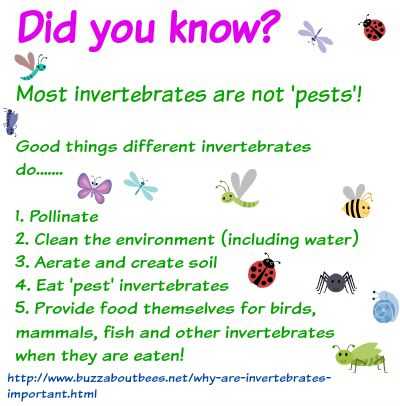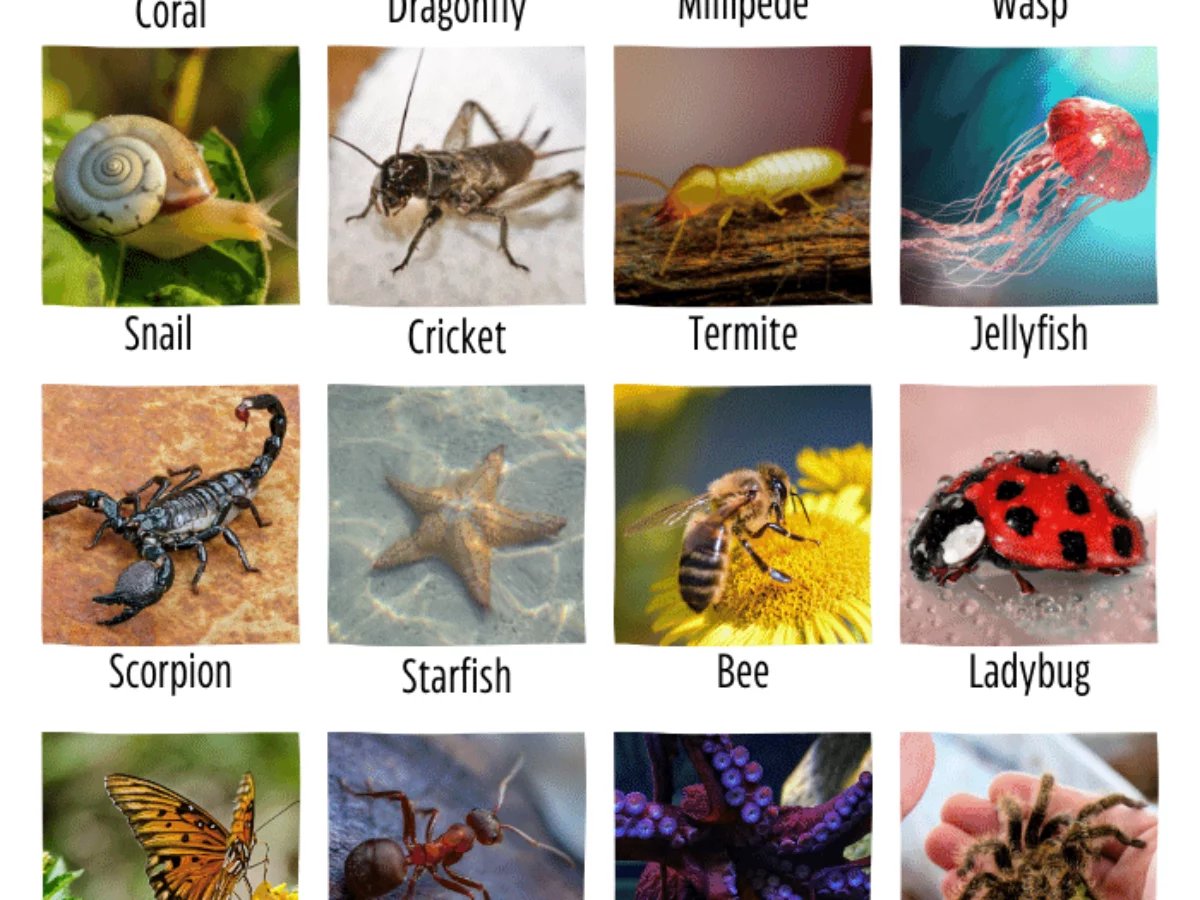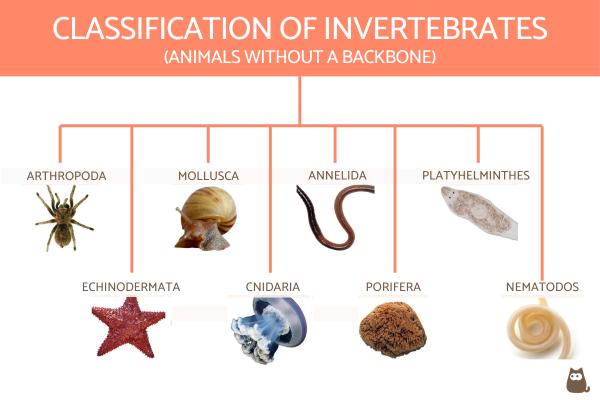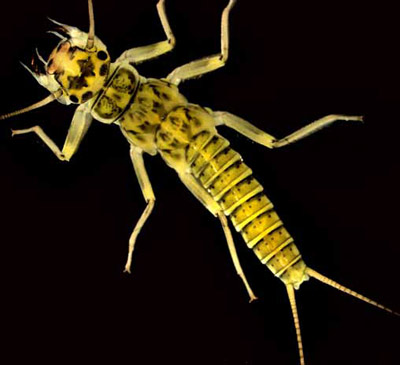Topic facts about invertebrate: Delve into the captivating world of invertebrates, a realm where over 95% of Earth"s animal species thrive, showcasing an astonishing array of forms, behaviors, and habitats. Discover these spineless wonders and their pivotal role in our ecosystem.
Table of Content
- What percentage of animals are invertebrates?
- Understanding Invertebrates: Definition and Significance
- Diversity in Invertebrates: Taxonomic Groups and Examples
- Physical Characteristics: Size, Body Structures, and Adaptations
- Biological Marvels: Regeneration Abilities and Unique Features
- Habitat and Distribution: Global Presence Across Various Ecosystems
- Role in the Ecosystem: Pollination, Soil Fertility, and More
- YOUTUBE: Invertebrate Animals - Educational Video for Kids
- Reproduction and Life Cycle: From Simple to Complex Strategies
- Behavioral Adaptations: Survival Strategies in Invertebrates
- Human Interaction: Benefits, Threats, and Conservation Efforts
- Invertebrates in Research and Medicine: Contributions and Discoveries
What percentage of animals are invertebrates?
Approximately 97 percent of all animals are invertebrates.
READ MORE:
Understanding Invertebrates: Definition and Significance
Invertebrates, encompassing a vast majority of Earth"s animal species, are defined by their lack of a vertebral column or backbone. This diverse group includes animals as small as microscopic rotifers to as large as the colossal squid, stretching up to 9-10 meters. Contrary to vertebrates, invertebrates represent a polyphyletic grouping without a strict taxonomic significance, thus covering a broad range of species.
- The term "invertebrate" is derived from Latin, with "in-" meaning "not" and "vertebra" referring to joints or a spinal segment, indicating animals without a spinal column.
- They constitute about 95% to 97% of all known animal species, highlighting their dominance in biodiversity.
- Invertebrates can be found in various habitats across the globe, from the deepest oceans to the highest mountains.
- This group includes numerous phyla such as Porifera (sponges), Cnidaria (jellyfish and corals), Platyhelminthes (flatworms), and Arthropoda (insects and spiders).
- Some invertebrates like starfish and planarians exhibit remarkable regenerative abilities, capable of regrowing lost body parts or even forming new organisms from fragments.
- They play crucial roles in ecosystems, such as bees in pollination and termites in building complex structures.
- Despite their lack of a backbone, invertebrates display a wide array of complex behaviors and adaptations, from the advanced problem-solving skills of octopuses to the silk production abilities of spiders.
Invertebrates are not just biologically fascinating; they are also essential to ecological balance and human life. Their study offers insights into evolution, adaptation, and the functioning of ecosystems.
:max_bytes(150000):strip_icc()/149242726-56a007eb5f9b58eba4ae8e3e.jpg)
Diversity in Invertebrates: Taxonomic Groups and Examples
Invertebrates, making up about 97% of all known animal species, are immensely diverse. They lack a backbone, but their range in form, size, and habitat is truly astonishing. This diversity is spread across various taxonomic groups, each with unique characteristics.
- Arthropods: This group includes insects, spiders, and crustaceans. Arthropods are known for their exoskeletons made of chitin, providing support and protection. They exhibit remarkable abilities like flight, communication, and camouflage.
- Mollusks: Ranging from bivalves like clams to cephalopods like octopuses and squids, mollusks are known for their nervous system and the mantle, a significant body part. Some, like clams, have a hinged shell, while others like octopuses lack shells.
- Cnidarians: Including jellyfish, corals, and sea anemones, cnidarians are known for their stinging tentacles. They have radially symmetrical bodies with specialized cells for capturing prey.
- Echinoderms: Examples include sea stars and sea urchins, characterized by their tough, spiny skin. Echinoderms have various shapes and colors and are known for their regenerative abilities.
- Porifera: Commonly known as sponges, these multicellular organisms have porous bodies through which water flows. They lack specialized cells, circulatory, digestive, and nervous systems.
- Flatworms: These are unsegmented, soft-bodied invertebrates, including both free-living and parasitic species like tapeworms and flukes.
Each group of invertebrates has adapted to their environment in unique ways, showcasing the incredible versatility and resilience of life without a backbone.
Physical Characteristics: Size, Body Structures, and Adaptations
Invertebrates are a remarkably diverse group of animals that display a vast range of physical characteristics. They vary widely in size, from microscopic organisms like rotifers, which are only about 50 micrometers in size, to the colossal squid, which can grow up to 9-10 meters in length. This diversity in size is matched by their variety in body structures and adaptations.
- Body Size and Structure: The body sizes of invertebrates range dramatically. For instance, jellyfish have been thriving in Earth’s oceans for over 500 million years with their simple anatomy, while termites can build towering structures that reach several meters in height.
- Regeneration Abilities: Some invertebrates, such as starfish and planarians, possess the remarkable ability to regenerate body parts. They can regrow lost limbs or even regenerate a whole new organism from a fragment of their body.
- Exoskeletons: Many invertebrates like insects and spiders possess exoskeletons made of chitin, providing them both support and protection. This exoskeleton is tough yet flexible.
- Marine Adaptations: Marine invertebrates exhibit a range of adaptations to thrive in oceanic environments. For instance, the Portuguese man o’ war, often mistaken for a jellyfish, is actually a colony of specialized organisms.
- Respiratory Adaptations: Invertebrates like insects have developed specialized structures like tracheal tubes for respiration. These tubes can contain ridge-like circumferential rings for efficient gas exchange.
- Camouflage and Defense: Invertebrates like the Madagascar Hissing Cockroach and praying mantises have developed unique defense mechanisms. The cockroaches produce a hissing sound for defense, while mantises use their spiny arms for catching prey.
Overall, the invertebrates" lack of a backbone has not hindered their evolutionary success. Instead, it has led to a plethora of forms, sizes, and specialized adaptations that allow them to thrive in various habitats across the globe.

Biological Marvels: Regeneration Abilities and Unique Features
Invertebrates are not just diverse in terms of species, but they also exhibit a range of extraordinary biological features and regeneration abilities. These remarkable traits highlight the adaptability and resilience of these spineless wonders.
- Regeneration Superstars: Some invertebrates, such as starfish and planarians, display incredible regenerative capabilities. Starfish can regrow lost arms, and planarians are known for their ability to regenerate an entire organism from a small tissue fragment.
- Incredible Insect Abilities: Insects, a major class of invertebrates, showcase fascinating abilities. They can fly, communicate through complex pheromones or sounds, and employ advanced camouflage techniques.
- Marine Marvels: The ocean"s depths are home to astounding invertebrates like jellyfish and corals. These creatures exhibit vibrant colors, intriguing shapes, and behaviors such as bioluminescence in the deep sea.
- External Skeletons: Many invertebrates, particularly arthropods like insects and crustaceans, have exoskeletons made of chitin, offering protection and flexibility.
- Survival in Extreme Conditions: Tardigrades, also known as water bears, are renowned for surviving in extreme environments, including the vacuum of outer space. They can enter a state called "tun" where they become almost indestructible.
- Metamorphosis: A common feature among invertebrates, metamorphosis, is seen in species like butterflies and jellyfish. They transform from larval stages to completely different adult forms.
- Complex Social Structures: Certain invertebrates, such as bees and termites, exhibit sophisticated social structures. They form large colonies with specialized roles for feeding, reproduction, and building shelters.
These biological marvels emphasize the vast and intriguing world of invertebrates, showcasing their critical roles in ecosystems and their astonishing adaptability to diverse habitats.
Habitat and Distribution: Global Presence Across Various Ecosystems
Invertebrates, constituting about 97% of all animal species, are found in every habitat on Earth. Their ability to adapt to a wide range of environmental conditions has allowed them to occupy diverse ecological niches.
- Marine Invertebrates: The ocean harbors a vast array of invertebrates, including jellyfish, corals, and cephalopods. Marine invertebrates vary from microscopic plankton to the colossal squid, with some species exhibiting bioluminescence.
- Terrestrial Invertebrates: Land-based invertebrates are equally diverse. Insects, spiders, and myriapods (centipedes and millipedes) are common in various terrestrial environments, from deserts to rainforests.
- Subterranean Habitats: Many invertebrates, such as earthworms and certain insect larvae, thrive underground. They play a crucial role in soil health, aiding in aeration and nutrient recycling.
- Freshwater Ecosystems: Freshwater habitats support a variety of invertebrates, including certain species of mollusks, annelids, and crustaceans. They contribute significantly to aquatic food webs and ecosystem functioning.
- Extreme Environments: Some invertebrates are adapted to extreme conditions. For example, tardigrades (water bears) can survive in the harshest environments, including the vacuum of space.
- Symbiotic Relationships: Many invertebrates, like bees and termites, form complex social structures and colonies, demonstrating advanced cooperative behaviors.
This wide distribution and adaptability of invertebrates highlight their integral role in maintaining ecological balance and biodiversity across the globe.

Role in the Ecosystem: Pollination, Soil Fertility, and More
Invertebrates play indispensable roles in various ecosystems around the world. Their activities and interactions within these environments are crucial for maintaining ecological balance and supporting life processes.
- Pollinators: Many invertebrates, especially bees, are vital pollinators. They facilitate the reproduction of flowering plants by transferring pollen, which is essential for the survival of numerous plant species.
- Soil Health and Fertility: Invertebrates like earthworms significantly contribute to soil health. Their burrowing actions aerate the soil, and their digestion of organic matter aids in nutrient cycling, enhancing soil fertility and structure.
- Decomposers: Several invertebrates act as decomposers, breaking down dead organic matter and returning essential nutrients to the soil. This process is fundamental for nutrient recycling in ecosystems.
- Food Web Contributions: Invertebrates form an integral part of food webs, serving as a primary food source for numerous vertebrate species, including birds, mammals, and fish.
- Biological Control Agents: Certain invertebrates, such as predatory insects and spiders, help control pest populations, contributing to the balance in ecosystems and aiding in agriculture.
- Aquatic Ecosystems: Marine and freshwater invertebrates, including various crustaceans and mollusks, play key roles in aquatic ecosystems by filtering water, providing habitat structures (like corals), and serving as food sources.
- Indicator Species: Some invertebrates serve as indicator species, helping scientists assess the health of ecosystems and detect environmental changes, including pollution and climate change impacts.
The diverse roles of invertebrates underscore their importance in sustaining ecosystems and the need for their conservation.
Invertebrate Animals - Educational Video for Kids
Discover the fascinating world of invertebrates in this captivating video! From tiny insects to graceful jellyfish, you\'ll be amazed by the variety of these spineless creatures and their incredible abilities.
Invertebrate Animals for Kids: Arthropods, Worms, Cnidarians, Mollusks, Sponges, Echinoderms
Dive into the extraordinary world of arthropods, worms, cnidarians, mollusks, sponges, and echinoderms in this mesmerizing video. Explore their diverse forms, unique adaptations, and the vital roles they play in our ecosystems. Prepare to be awed by the wonders of the animal kingdom!
Reproduction and Life Cycle: From Simple to Complex Strategies
Invertebrates play indispensable roles in various ecosystems around the world. Their activities and interactions within these environments are crucial for maintaining ecological balance and supporting life processes.
- Pollinators: Many invertebrates, especially bees, are vital pollinators. They facilitate the reproduction of flowering plants by transferring pollen, which is essential for the survival of numerous plant species.
- Soil Health and Fertility: Invertebrates like earthworms significantly contribute to soil health. Their burrowing actions aerate the soil, and their digestion of organic matter aids in nutrient cycling, enhancing soil fertility and structure.
- Decomposers: Several invertebrates act as decomposers, breaking down dead organic matter and returning essential nutrients to the soil. This process is fundamental for nutrient recycling in ecosystems.
- Food Web Contributions: Invertebrates form an integral part of food webs, serving as a primary food source for numerous vertebrate species, including birds, mammals, and fish.
- Biological Control Agents: Certain invertebrates, such as predatory insects and spiders, help control pest populations, contributing to the balance in ecosystems and aiding in agriculture.
- Aquatic Ecosystems: Marine and freshwater invertebrates, including various crustaceans and mollusks, play key roles in aquatic ecosystems by filtering water, providing habitat structures (like corals), and serving as food sources.
- Indicator Species: Some invertebrates serve as indicator species, helping scientists assess the health of ecosystems and detect environmental changes, including pollution and climate change impacts.
The diverse roles of invertebrates underscore their importance in sustaining ecosystems and the need for their conservation.

Behavioral Adaptations: Survival Strategies in Invertebrates
Invertebrates play indispensable roles in various ecosystems around the world. Their activities and interactions within these environments are crucial for maintaining ecological balance and supporting life processes.
- Pollinators: Many invertebrates, especially bees, are vital pollinators. They facilitate the reproduction of flowering plants by transferring pollen, which is essential for the survival of numerous plant species.
- Soil Health and Fertility: Invertebrates like earthworms significantly contribute to soil health. Their burrowing actions aerate the soil, and their digestion of organic matter aids in nutrient cycling, enhancing soil fertility and structure.
- Decomposers: Several invertebrates act as decomposers, breaking down dead organic matter and returning essential nutrients to the soil. This process is fundamental for nutrient recycling in ecosystems.
- Food Web Contributions: Invertebrates form an integral part of food webs, serving as a primary food source for numerous vertebrate species, including birds, mammals, and fish.
- Biological Control Agents: Certain invertebrates, such as predatory insects and spiders, help control pest populations, contributing to the balance in ecosystems and aiding in agriculture.
- Aquatic Ecosystems: Marine and freshwater invertebrates, including various crustaceans and mollusks, play key roles in aquatic ecosystems by filtering water, providing habitat structures (like corals), and serving as food sources.
- Indicator Species: Some invertebrates serve as indicator species, helping scientists assess the health of ecosystems and detect environmental changes, including pollution and climate change impacts.
The diverse roles of invertebrates underscore their importance in sustaining ecosystems and the need for their conservation.
Human Interaction: Benefits, Threats, and Conservation Efforts
Invertebrates, a diverse and numerous group, play a pivotal role in various ecosystems and human life. They contribute significantly to environmental health, agricultural productivity, and medical advancements. However, human activities pose threats to invertebrate populations, necessitating urgent conservation efforts.
Benefits of Invertebrates
- Pollination: Bees and other pollinators are crucial for the reproduction of many plants, including crops.
- Soil Health: Earthworms and other soil-dwelling invertebrates enhance soil structure and fertility, aiding plant growth.
- Medical Research: Invertebrates like leeches and marine species provide insights and compounds for medical research and treatments.
- Ecosystem Services: Invertebrates contribute to nutrient cycling, decomposition, and maintaining ecological balance.
Threats to Invertebrates
- Habitat Loss: Urbanization and deforestation lead to the loss of natural habitats essential for invertebrate survival.
- Pollution: Chemical, plastic, and noise pollution adversely affect invertebrate populations.
- Climate Change: Altered weather patterns and temperatures impact invertebrate life cycles and habitats.
- Overexploitation: Overfishing and unsustainable harvesting of invertebrates for food and trade threaten their populations.
Conservation Efforts
Conservation of invertebrates is critical for maintaining biodiversity and the health of ecosystems. Efforts include:
- Protecting and restoring natural habitats to ensure the survival of diverse invertebrate species.
- Implementing sustainable agricultural and fishing practices to reduce the impact on invertebrate populations.
- Supporting research and monitoring programs to understand invertebrate ecology and inform conservation strategies.
- Creating awareness and educational programs to highlight the importance of invertebrates and the need for their conservation.
In summary, invertebrates are essential for ecological balance and human welfare. Their conservation is integral to sustaining the natural world and its resources.

READ MORE:
Invertebrates in Research and Medicine: Contributions and Discoveries
Invertebrates have made significant contributions to research and medicine, offering insights and discoveries that have advanced human health and scientific understanding. This section explores the various roles invertebrates play in research and their contributions to medical science.
Vital Roles in Scientific Research
- Model Organisms: Simple invertebrates like C. elegans (a nematode) are used as model organisms in genetic studies due to their simplicity and transparency.
- Behavioral Studies: Invertebrates like fruit flies (Drosophila melanogaster) are crucial for studying genetics, behavior, and disease processes.
- Environmental Indicators: Many invertebrates serve as indicators of environmental health, aiding in ecological and conservation research.
Medical Advancements
- Drug Discovery: Compounds derived from marine invertebrates have been used in developing new drugs, including cancer treatments.
- Wound Healing: Medicinal leeches are used for their anticoagulant properties in microsurgery and reconstructive surgery.
- Neurological Research: Studies on squid and octopus nervous systems have provided insights into human brain functioning and disorders.
Biotechnology and Engineering
- Biomimicry: The study of invertebrates has inspired advancements in biomimetic materials and engineering, such as adhesives modeled after mussel byssal threads.
- Bioindicators: Certain invertebrates are used to assess the health of ecosystems, especially in aquatic environments.
In summary, invertebrates are not only fascinating for their diversity and biological features but also invaluable for their contributions to science and medicine.
Discover the extraordinary world of invertebrates, a realm where the smallest creatures hold the keys to vast scientific and ecological mysteries. Uncover their intriguing roles in our ecosystems and their groundbreaking contributions to research and medicine. Join us on a journey into the fascinating and often unseen world of invertebrates, a journey that promises to amaze and inspire!







